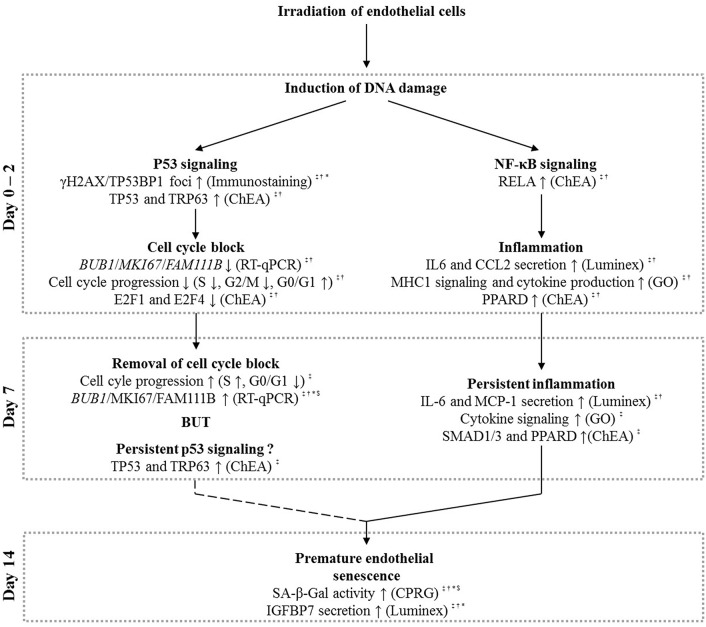Figure 5.
Schematic overview based on our experimental findings and literature that explains the possible role of p53 and NF-κB signaling in radiation-induced premature senescence. Irradiation of endothelial cells with a single X-ray dose leads to the formation of DNA damage, resulting in both p53 and NF-κB signaling, well-known signaling responses in irradiated cells (Yu, 2012). At day 0–2 post-irradiation, induced p53 signaling can result in a G1/S cell cycle block (Agarwal et al., 1995), which is removed at day 7 post-irradiation. Although not conclusive (question mark symbol), we also suggest the presence of a persistent p53 signaling at this time-point. NF-κB signaling on day 0–2 post-irradiation, on another hand, could induce endothelial inflammation (Kempe et al., 2005) that persists until day 7 post-irradiation. Both the persistent p53 signaling (Rufini et al., 2013) and inflammatory state (Freund et al., 2010; Kojima et al., 2013) may lead to premature senescence observed at day 14 after irradiation with a single X-ray dose. Symbols indicate the irradiation dose at which the described effects were observed: ‡ = 2 Gy, † = 0.5 Gy, * = 0.1 Gy, and $ = 0.05 Gy.

